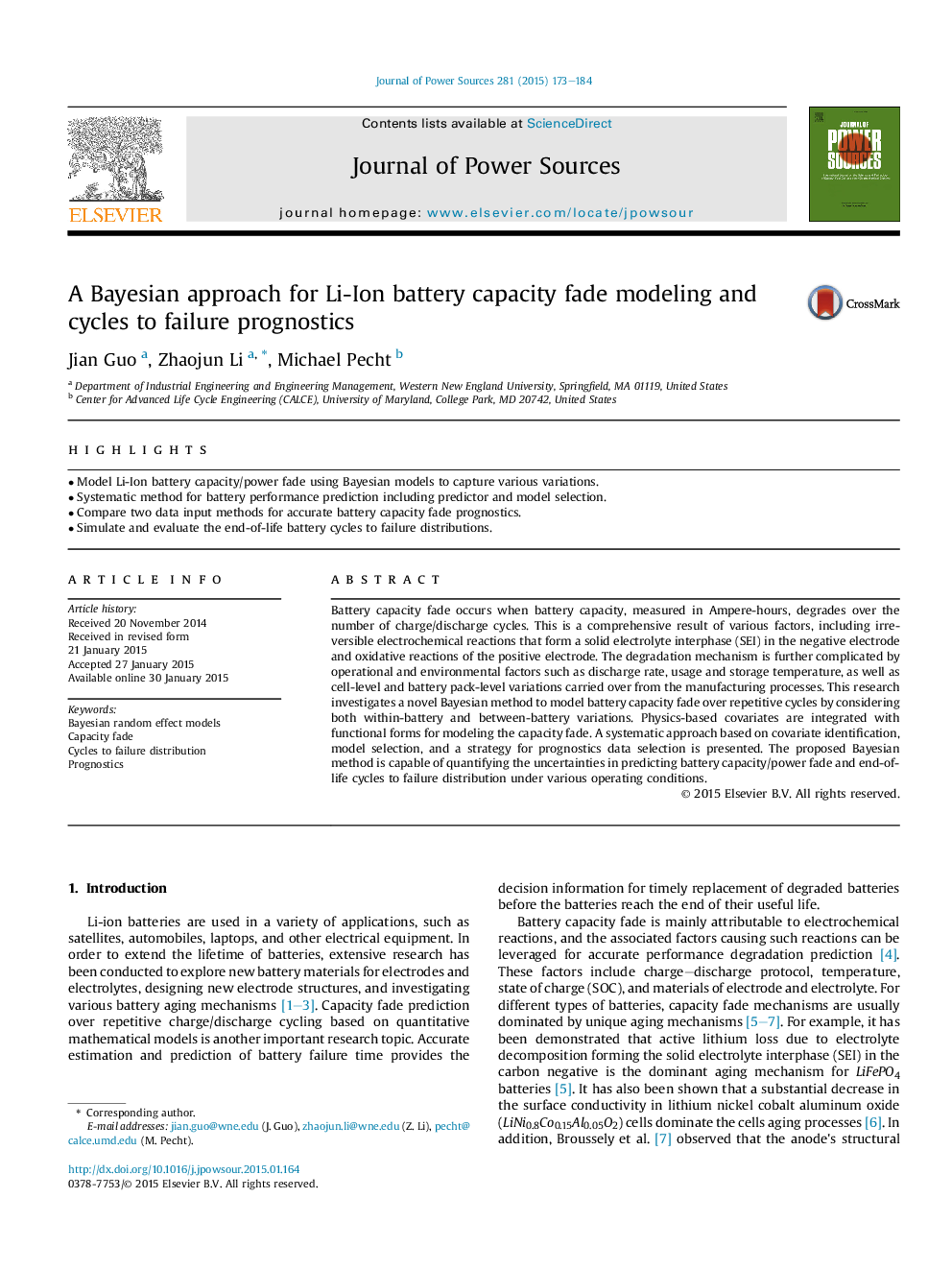| Article ID | Journal | Published Year | Pages | File Type |
|---|---|---|---|---|
| 1286305 | Journal of Power Sources | 2015 | 12 Pages |
•Model Li-Ion battery capacity/power fade using Bayesian models to capture various variations.•Systematic method for battery performance prediction including predictor and model selection.•Compare two data input methods for accurate battery capacity fade prognostics.•Simulate and evaluate the end-of-life battery cycles to failure distributions.
Battery capacity fade occurs when battery capacity, measured in Ampere-hours, degrades over the number of charge/discharge cycles. This is a comprehensive result of various factors, including irreversible electrochemical reactions that form a solid electrolyte interphase (SEI) in the negative electrode and oxidative reactions of the positive electrode. The degradation mechanism is further complicated by operational and environmental factors such as discharge rate, usage and storage temperature, as well as cell-level and battery pack-level variations carried over from the manufacturing processes. This research investigates a novel Bayesian method to model battery capacity fade over repetitive cycles by considering both within-battery and between-battery variations. Physics-based covariates are integrated with functional forms for modeling the capacity fade. A systematic approach based on covariate identification, model selection, and a strategy for prognostics data selection is presented. The proposed Bayesian method is capable of quantifying the uncertainties in predicting battery capacity/power fade and end-of-life cycles to failure distribution under various operating conditions.
